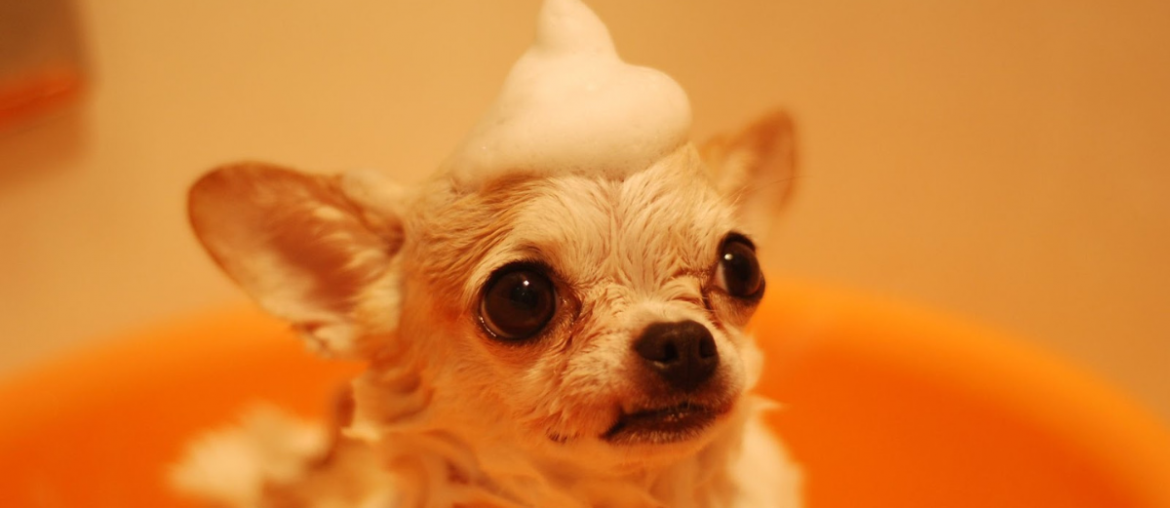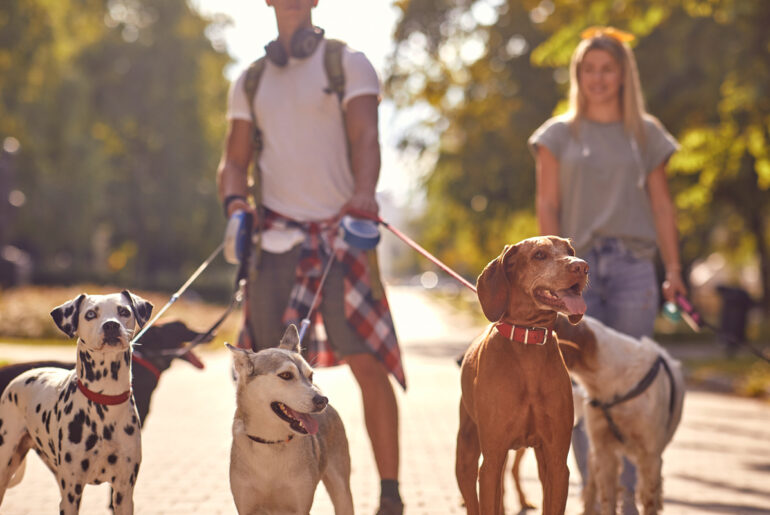So, you’re thinking about starting a dog grooming business. Maybe you’ve worked in a grooming salon before or are just considering learning the trade for the first time. Whatever the case, starting your own business is not something to take lightly, but thankfully, we’ve got everything you need to make an informed decision.
The average dog groomer makes roughly $18 per hour in retail, not including tips. Meanwhile, the average salon manager makes approximately $22.75 per hour (again, not including tips).
If you want to make the most out of your grooming skills, being your own boss is the way to go. So, where do you start?
The Basics
Before deciding whether or not to start your dog grooming business, you must consider a few things—start-up costs, business entity, location, and, most importantly, how to bring in dog grooming clients.
Dog Grooming Start-Up Costs
The first thing you want to consider when starting any business is the start-up cost. Between getting licenses, insurance, permits, renting or buying a space, purchasing grooming supplies, and more, starting a dog grooming business will be expensive.
Do thorough research into what supplies you will need to get a better idea of how much it will cost, which will likely be thousands of dollars.
Where will the money come from? If you’re taking out a loan, are you confident enough in your potential future income that you will be able to pay it off? Are you spending your savings? Refinancing your house? Think carefully before putting all your eggs in one basket.
Business Entity
What type of business will you be in? Will you hire staff? Will you split the rent of a property with another groomer? Whichever you decide will help you choose which business entity to identify as.
The simplest option to start your dog grooming business is to become a Sole Proprietor, a business operation solely owned and operated by you. This is the easiest way to begin your entrepreneurship and makes things much easier during tax season.
If you plan to hire staff, you should start an LLC. If you plan to enter into an agreement with another groomer or business partner, you could start a Partnership. Whatever you decide, always weigh the pros and cons of bringing another person into the picture. Never do business with someone you do not trust completely—you don’t want to get screwed over.
Business Location
Your business location will often tie in with the type of business entity you identify as. Running your grooming business from home is likely the most straightforward option if you are a sole proprietor. Even if it is a separate building on your property, working from home will save you travel time, tax dollars, and rent money in the long run.
If you plan on running a salon with a partner or employees, renting a space might be a good option. It can save you money if the landlord insures the space, and if something happens, you’ll know that all your hard work didn’t just go up in flames.
Bringing in Dog Grooming Clients
All the planning and preparation in the world won’t help you save your business if you don’t have any clients. The question is, how do you bring them in? The answer is; to advertise, advertise, advertise. Put ads on social media, create a website, and ensure all your contacts know about your new business.
Plaster your business name up all over town with posters, business cards, and anything else you can think of. The local gas stations, post office, and grocery stores—you want your community to know your name. You should primarily focus on pet-centered places like the dog park, pet stores, and veterinary offices.
However, one important thing to note is that if you have previously worked for a grooming salon and are thinking of stealing clients—think again. More than likely, they will have some sort of legal contract in place that could land you in serious trouble if you try poaching previous clients. This is also something to consider if you plan to hire employees and prevent the same from happening to you.
The Nitty-Gritty
Once you’ve got the basics out of the way, it’s time to dive into the nitty-gritty details of starting a dog grooming business. These details include services offered, pricing, contracts, policies, and emergency procedures, just to name a few.
Dog Grooming Services
Depending on your training, there may be certain types of grooming you aren’t willing to do. For instance, some dog groomers also groom cats, but many do not. There are also many haircuts for different dog breeds, and you may not want to offer such a vast selection of services. When starting a dog grooming business, your best bet is to start strong with what you know best. Offer only a few options at first that you are 100% confident doing, then add more options later. A few essential grooming services you’ll want to consider might be;
- Nail trimming
- Nail grinding
- Ear cleaning
- Anal gland extraction
- Sani trim (cleaning and trimming the fur around the genitals)
- Basic bath
- Sensitive bath (scent-free for pets with allergies)
- Furminator bath (de-shedding shampoo for heavy shedders)
- Furminator brush
Most of the services listed above are the bare minimum offered at any salon and don’t require much training if any. More complex grooming services that would require professional training would include;
- Shave down
- Breed-specific haircuts (poodles, terriers, cockapoos, etc.)
Dog Grooming Pricing
The cost of grooming services can vary drastically, anywhere from $10 for a simple nail trim to over $100 for a complicated haircut. Check out other dog grooming services in your area to compare prices and make your decisions based on that.
You don’t want to overprice your services and risk clients going someplace cheaper, but you don’t want to undersell yourself, either. Offering new clients a discount on their first groom is a great way to bring in new clientele and gives you a chance to show your worth.
Contracts & Policies
Working with animals always has risks, but this risk is even higher when sharp objects are around. Always put the safety of yourself and the animals above anything else, and give yourself a set of rules to follow no matter what. A good example might be;
- Never work on an untethered animal.
- Check the security of the tables and harnesses before every groom
- Keep potentially aggressive animals muzzled
- Never leave animals unattended on the table or bath
- Always have fresh water available in kennels
In addition to ensuring you are doing your best to ensure everyone is safe, your clients also need to understand their part. It’s a good idea to have a list of unacceptable issues and have every client sign a contract stating they understand the risks. Some examples of problems that should prevent dogs from being groomed might be;
- Heart disease
- Pregnancy
- Dogs in heat
- Flea infestation
Emergency Procedure
While nobody likes to plan for the worst, you must do so. Write down your emergency plans and keep them on hand at all times. Some possible emergency situations could include the following;
- Structure fire
- Severe inclement weather
- Animal attack
- Animal fight
- Medical emergency
Having a plan for any possible scenario is critical to ensuring the best outcome should the worst happen. Planning for these things will help ensure everyone stays calm and safe amid a crisis.




